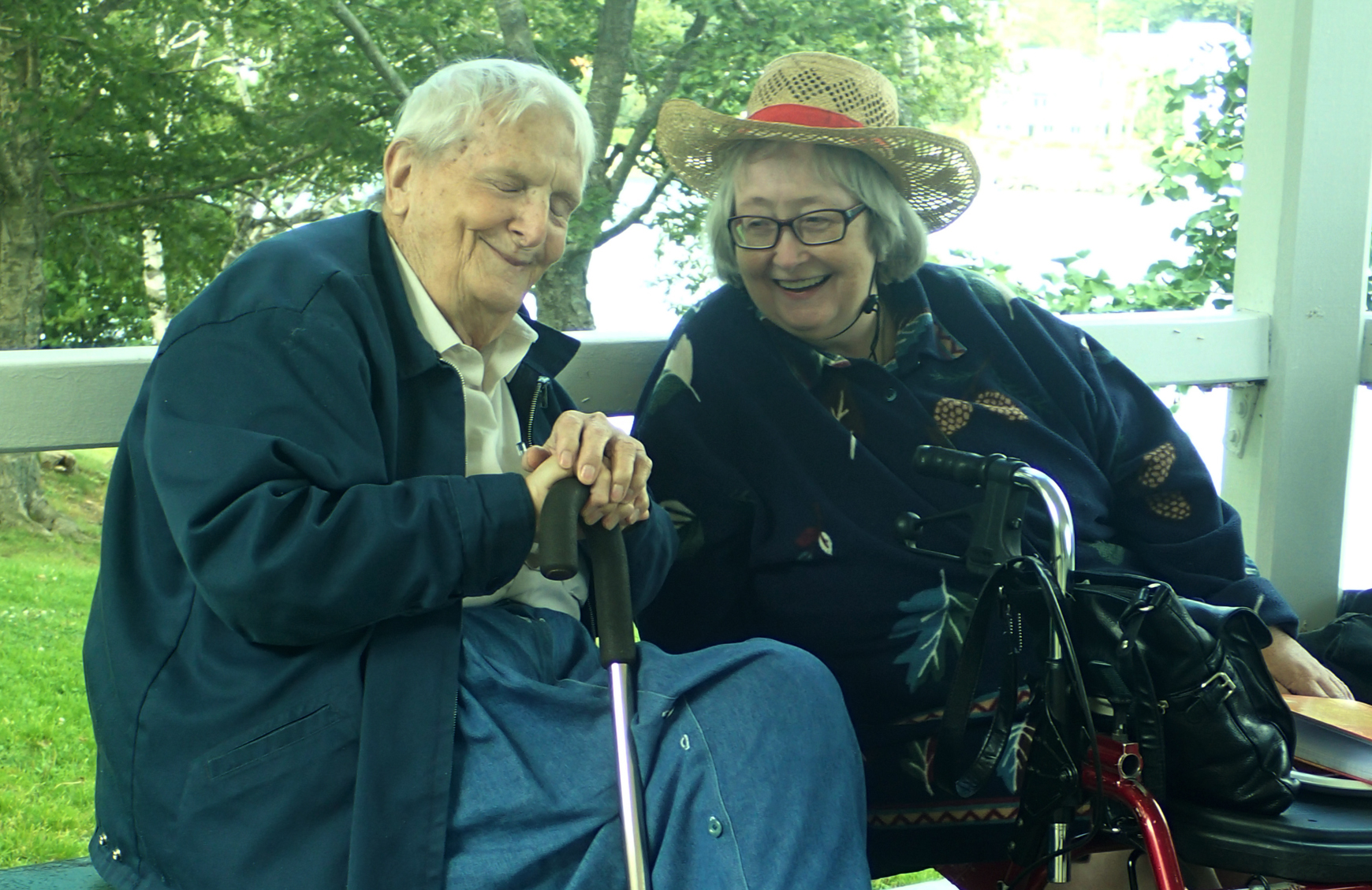The sea was in Patricia Martinson’s blood
Navy veteran, 2LGBTQ+ advocate, museum raconteur passed away in October at 101

caption
Patricia Martinson, left, and Lynn Murphy laugh at an Elderberries picnic at the Halifax Dingle in 2014. Martinson died earlier this year at 101.After a life of naval service spanning the Second World War to the 1980s, as well as decades of 2SLGBTQ+ advocacy, Patricia Martinson passed away in October at age 101.
Now, she’s being remembered as a captivating storyteller who led a life of service.
Martinson was a member of the Elderberries, Halifax’s 2SLGBTQ+ elders’ group. That’s where she met Lynn Murphy, who remembers when Martinson started attending community meetings in the 1990s.
Martinson was confidently trans at a time when it wasn’t common.
“When Patricia first appeared on the scene, we didn’t quite know what to make of her, because at that time, there was not such a visibility of trans people in the LGBTQ community,” said Murphy.
Martinson didn’t talk about her military service much – she reserved that for museum interpretation and storytelling.
“And so all this stuff that came out … that [she] was in the Navy and so on,” Murphy said, smiling. “Did she do that? Were women allowed to have that position at that time? And of course they were.”
A naval career
According to her obituary in the Halifax Chronicle-Herald, published on Oct. 26, Martinson spent her early years sailing in dinghies near her home in Northern Ireland. She joined the British army in 1940 and was commissioned in the Royal Indian Navy in 1942.
Martinson and her wife, Rosemary, immigrated to Vancouver, B.C., in 1952, but soon left Canada for Europe. Her son, Simon, was born in Scotland in 1958. She spent the next 20 years working at sea and travelling.
Martinson transitioned to female in October 1980 when she underwent gender-affirming surgery while living in Quebec City. She moved to Halifax in 1982.
Murphy provided the Signal with a photo of herself and Martinson at an Elderberries picnic, taken at the Dingle in 2014.
“I have no memory of what we were laughing at, but I think from the expressions on our faces, it was something that she had said that was really funny,” said Murphy.
“You can tell she had great fun making people laugh.”
Women at sea
After retiring from the navy, Martinson interpreted at the Maritime Museum of the Atlantic and continued volunteering at the museum well into her 90s.
It’s unclear whether Martinson openly identified as a woman before her transition in 1980, though she continued working on ships until she moved to Halifax.
She talked a lot about the treatment of women at sea, towards herself and those she worked with, said Amber Laurie, the museum’s curator of marine history.
Laurie interviewed Martinson for The Sea in Her Blood, an exhibition that celebrated the stories of women at sea. In that interview, Laurie asked Martinson what she wanted the public to know about her life spent seafaring.
“There possibly still are some people who feel that a woman’s place is not on the bridge of a ship … Why shouldn’t they try to be in any capacity that they feel that they would be capable of working?” said Laurie, recounting Martinson’s response.
Surviving the Bombay Explosion and telling the story
The Maritime Museum is a large, echoey building. Every sound bounces off the walls – especially a voice as strong as Martinson’s. When she told a story, visitors would stop and listen, said Laurie.
“[Martinson] was also super engaging with stories,” said Laurie. “She would teach some of our visitors how to use a sextant, but at the same time, she would talk about stories of her life.”
One of Martinson’s stories was about surviving the Bombay (now Mumbai, India) explosion in April 1944. Like the Halifax Explosion, a British freighter carrying explosives caught fire and exploded in the harbour. One thousand people were killed, and thousands more were rendered homeless.
Martinson was relatively unharmed, and spent the following hours looking for survivors, taking as many as she could to a nearby hospital.
“Something absolutely tragic, devastating happens, and [Martinson was] immediately willing to help people, get them to safety,” said Laurie.
“She really connected to people. She was really engaging, but also just willing to share her life with anyone. It would captivate a lot of people,” said Laurie.
Martinson also volunteered as a props manager with the Royal Nova Scotia International Tattoo. She retired from that role in 2015 at age 92.
“Always equipped with a story and a solution, Patricia’s charm and humour were on full display backstage at the Scotiabank Centre. People orbited around her at parties and receptions,” said the Royal Nova Scotia International Tattoo in a statement.
About the author

Jennifer Waugh
Jennifer Waugh holds a BA in social justice from Saint Mary's University. In spring 2025 she will graduate with a Bachelor of Journalism degree...
